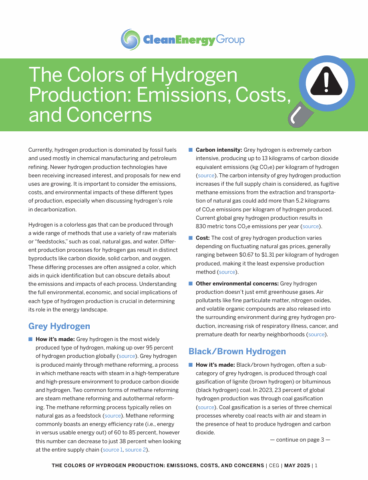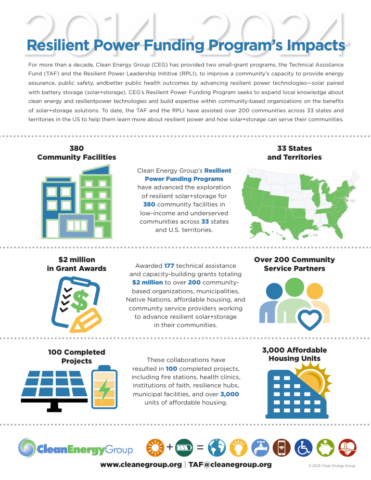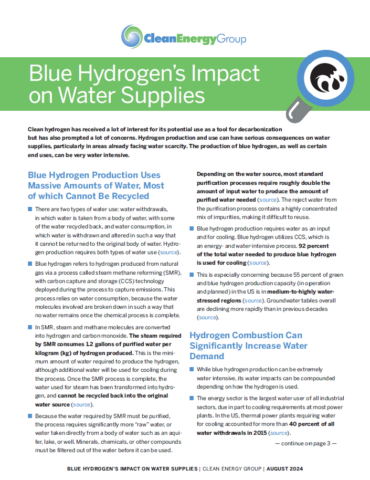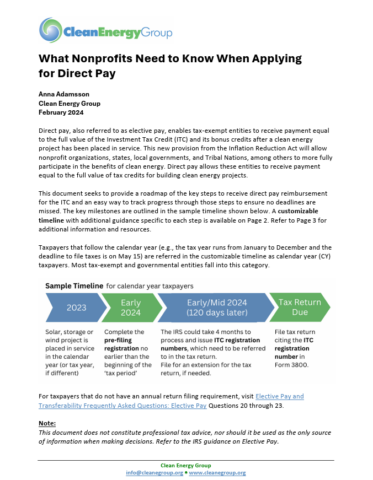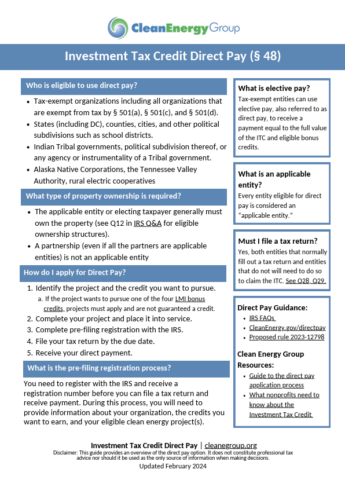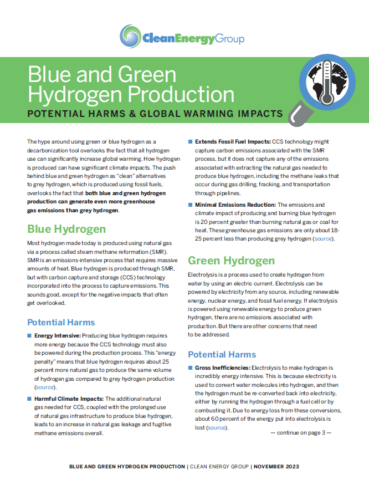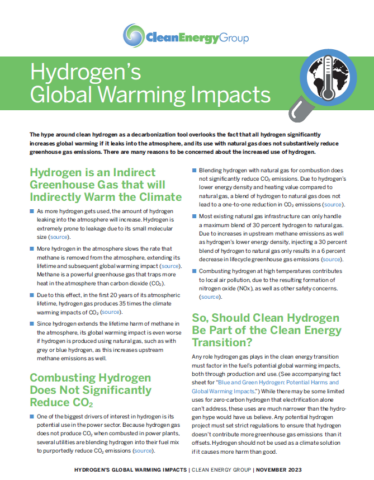Fact Sheet
Hydrogen is a colorless gas that can be produced through a wide range of methods using a variety of raw materials or “feedstocks,” such as coal, natural gas, and water. Different production processes for hydrogen gas result in distinct byproducts like carbon dioxide, solid carbon, and oxygen. These differing processes are often assigned a color,…
This document summarizes some of the key project outcomes of the Resilient Power Project through providing information, knowledge-building support, and technical assistance to organizations working in low-income communities and communities of color across the country.
The Greenhouse gases, Regulated Emissions, and Energy use in Technologies (GREET) model is used to determine the lifecycle emissions of various energy sources, expressed as carbon equivalent emissions, and creates the framework for many monetary and market incentives related to energy production. In some cases, the values, assumptions, and calculations within each GREET model have…
The U.S. Treasury Department released final guidance on the 45V Clean Hydrogen Production Tax Credit in January 2025. While the guidance did contain the vital “three pillars” of incrementality, temporal matching, and deliverability, which are essential for ensuring hydrogen production does not lead to a massive increase in grid emissions, it also contains several concessions…
Could blending hydrogen with natural gas help decarbonize the natural gas supply chain? This 4-page fact sheet outlines the potential dangers of blending hydrogen and natural gas in pipelines. These dangers include hydrogen’s corrosive effects on pipeline materials, its tendency to leak, and its highly explosive nature. Hydrogen blending is also inefficient and costly: a…
Clean hydrogen has received a lot of interest for its potential use as a tool for decarbonization but has also prompted a lot of concerns. Hydrogen production and use can have serious consequences on water supplies, particularly in areas already facing water scarcity. The production of blue hydrogen, as well as certain end uses, can…
This document seeks to provide a roadmap of the key steps to receive direct pay reimbursement for the ITC and an easy way to track progress through those steps to ensure no deadlines are missed.
This Direct Pay Fact Sheet details which types of tax-exempt entities are eligible to receive direct pay, outlines the process to receive direct pay, and introduces additional resources.
The hype around using green or blue hydrogen as a decarbonization tool overlooks the fact that all hydrogen use can significantly increase global warming. How hydrogen is produced can have significant climate impacts.
The hype around clean hydrogen as a decarbonization tool overlooks the fact that all hydrogen significantly increases global warming if it leaks into the atmosphere, and its use with natural gas does not substantively reduce greenhouse gas emissions.





